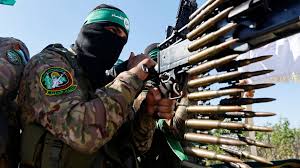Understanding Hamas: Implications for the Middle East and Beyond

Introduction
Hamas is a Palestinian militant organization and political party that has been at the center of the Israeli-Palestinian conflict for decades. With its roots in the Muslim Brotherhood, Hamas emerged in the late 1980s during the First Intifada, and it has played a significant role in shaping the political landscape of Palestine and the broader Middle East. Understanding Hamas is crucial, as its actions and policies directly affect international relations, regional stability, and the ongoing humanitarian crises in Gaza and Israel.
Recent Developments
In recent months, tensions between Hamas and Israel have escalated, leading to an increase in military confrontations and civilian casualties. The conflict reignited in October 2023, when Hamas launched a series of attacks against Israeli targets, prompting a severe military response from Israel. Reports indicate that these clashes have resulted in hundreds of deaths and significant destruction in Gaza, exacerbating the already dire humanitarian situation.
International reactions have varied, with some countries condemning Hamas’s attacks while others criticize Israel’s military response as disproportionate. The United Nations and various humanitarian organizations have called for a ceasefire, stressing the urgent need for humanitarian aid to reach those affected in Gaza, where basic services and resources are severely limited.
The Role of Hamas
Hamas’s dual role as both a governing body in Gaza and a militant organization complicates efforts for peace negotiations. While the organization provides social services and governance in the territory it controls, its charter advocates for armed struggle against Israel and denies its right to exist. This duality poses significant challenges to moderates within Palestinian society who seek a peaceful solution through dialogue and negotiation.
Furthermore, Hamas’s ties to Iran and other militant groups signal that it is part of a broader geopolitical struggle in the region. The Iranian support for Hamas has raised concerns in Israel and among its allies, adding another layer to the complexity of Middle Eastern politics.
Conclusion
The situation surrounding Hamas continues to evolve, with the potential for further escalations and consequences for regional and global stability. As the conflict persists, understanding Hamas’s motivations, goals, and impact on the peace process in the Middle East is essential not only for policymakers but also for global citizens concerned with peace and security. The hope remains that through international diplomacy and mediation, a lasting resolution can be achieved that addresses the needs and rights of all parties involved.









